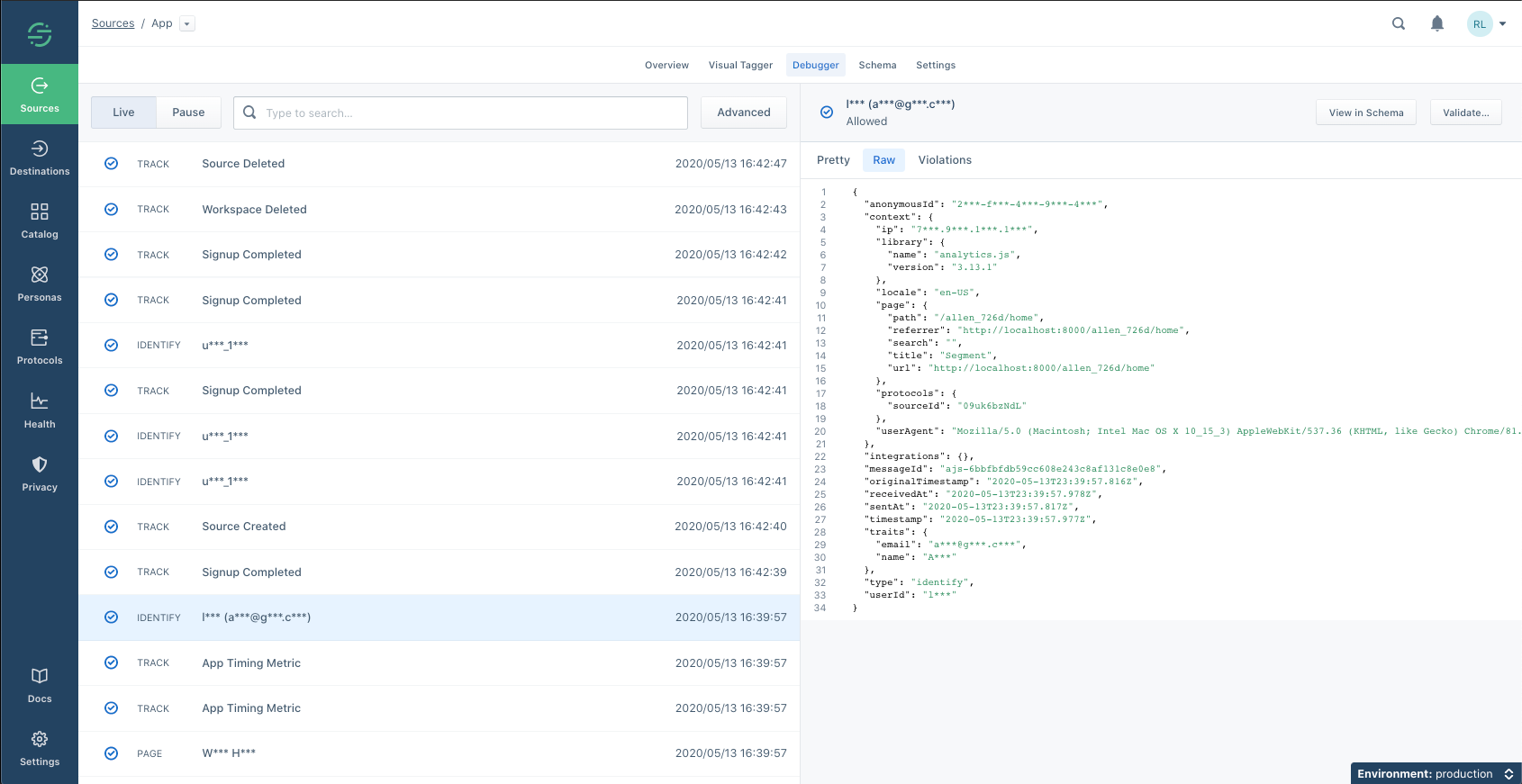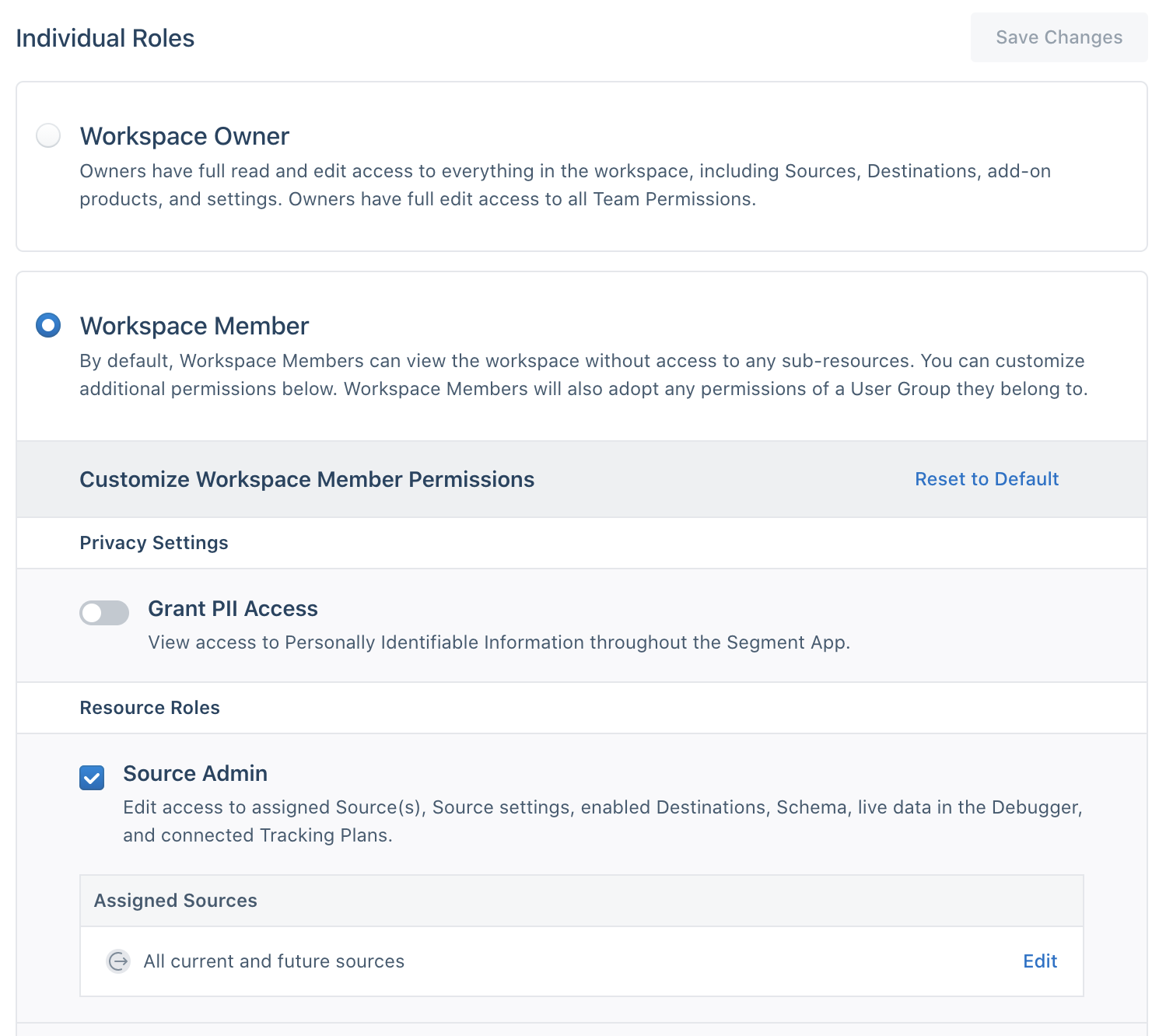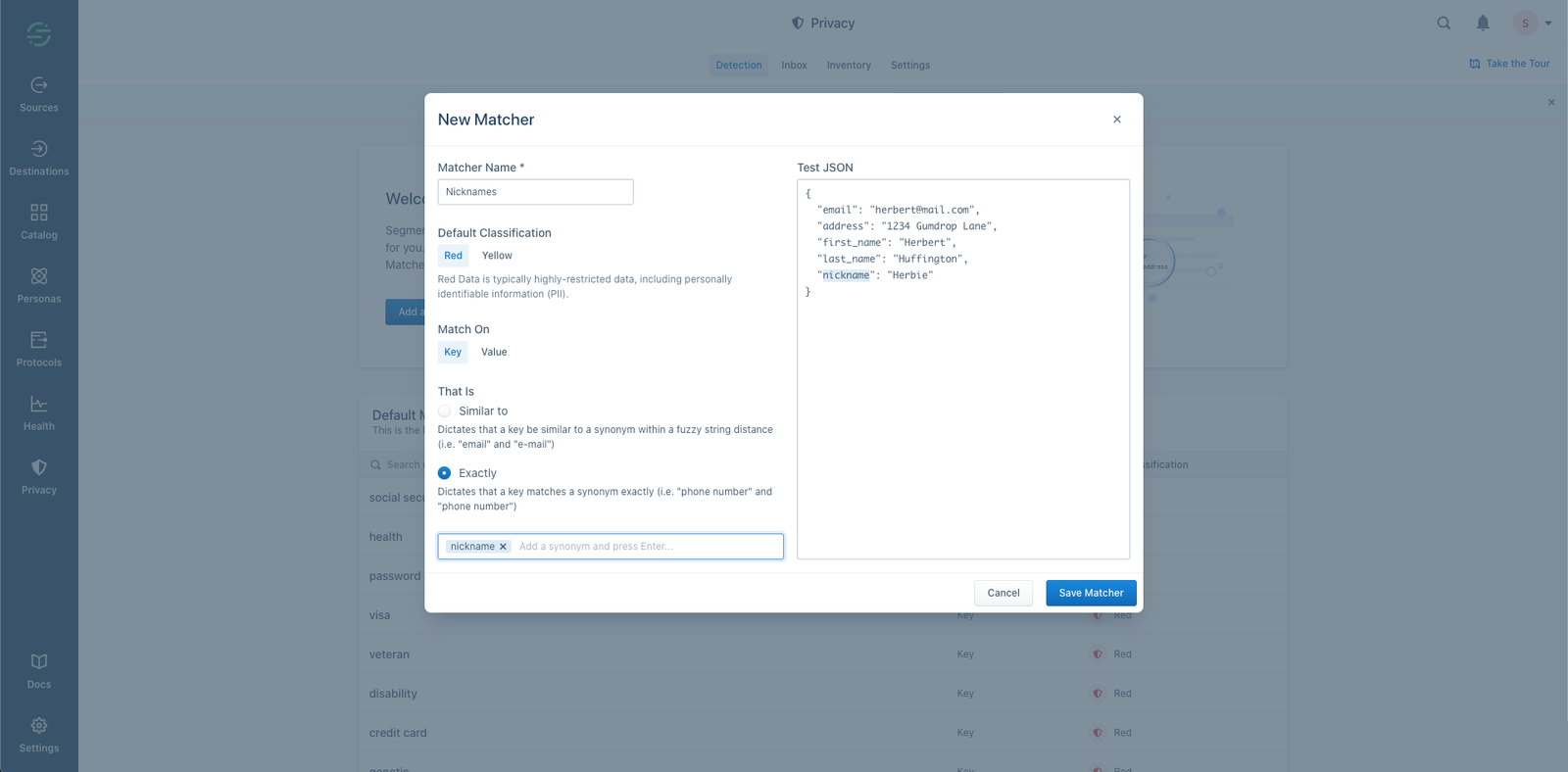Grant PII Access disabled by default
This new permission model, along with the improved PII detection tools, allows you to block PII data without hiding functionality from your workspace users. Now, you can invite users to your workspace without them having access to end-user data. Those users will see masked values in place of PII—allowing them to safely navigate the areas of the Segment app they need to access.
What does masking mean?
Masking is a method of obscuring that data while preserving its general format.
Below, we have a customer name that needs to be obscured; we'll apply PII masking to it in a moment, and discuss the results.
{ "name": "Bob the Builder" }
When this value is masked, it becomes:
{ "name": "B*** t*** B***" }
This format, with all of its *** asterisks may look funny at first, but it conveys the shape of the data without exposing any PII!
Masking is straightforward when you can quickly tell the data is a name or an email. Segment offers default matchers such as social security number, password, token, credit card, email, address, and more. You can view a complete list of default matchers in the Segment Docs.
In practice, however, customer data of all types vary across industries and regions. There are no global rules on how to format data, so customer data takes shape in a myriad of ways across Segment implementations. There is no thorough approach to prescribe how to identify what PII is and the form it takes. To solve that problem, you have the tools in Segment to configure what PII looks like for your customers.
Imagine that Company A has set up analytics.js on its website and connected it to its favorite destination. A track event comes through the pipeline, and it contains various contextual fields.
{ "name": "Human Being", "email": "on.the@inter.net", "nickname": "Hugh Bean" }
With Segment's default matchers, name and email are automatically detected as PII and masked accordingly.
{ "name": "H*** B***", "email": "o***.t***@i***.n***", "nickname": "Hugh Bean" }
Now, since PII takes many shapes and forms, Company A has identified nickname as a sensitive, customer-identifying field.
Company A's executive leadership mandates any nickname must be masked to meet their internal privacy compliance goals. Any vendor tools that lack this ability cannot be used.
No need to worry, Company A is using Segment and can tell their execs all of the customer-identifying fields are masked!
Flexible PII masking
You can use custom matchers—a feature of the Privacy Portal that enables you to classify PII in whichever shapes it takes in your workspace—for masking data in the Segment app.



